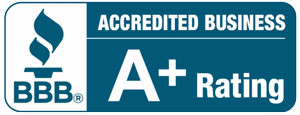The No-Fuss Design Fix: Graphic Hacks for Small Business Hustlers
For small business owners juggling logistics, staffing, marketing, and client expectations, good design can often feel like the last box to tick—if it gets ticked at all. But in the current visual economy, ignoring design is no longer an option. Consumers make split-second judgments based on branding alone, and blurry logos or haphazard color palettes can quietly chip away at trust. The good news? Graphic design no longer belongs exclusively to seasoned pros with Adobe Suite mastery. With the right mindset and a few approachable tools, design can become less of a bottleneck and more of a secret weapon.
Design Confidence Without the Guesswork
You don’t need a design degree—or even a design background—to turn out impressive flyers, brochures, and banners. With the help of AI-powered graphic design tools, you get access to drag-and-drop templates, intelligent recommendations, and built-in customization features that make professional-looking materials a breeze. These platforms take the friction out of layout decisions, letting you focus on messaging while the system handles the visual details. To see how simple it can be, take a look at platforms offering real-time editing suggestions and brand-matching automation.
Stick With One Font Family—Two, Max
There's a reason most successful brands don’t have ten different fonts elbowing each other in a single flyer. Fonts carry mood and identity, and clashing them dilutes both. Keeping to one font family for headers and another for body text creates harmony without the visual noise. Google Fonts, a free resource, offers pairs like Lato and Merriweather that complement each other with minimal effort. The trick is not to get lost in the endless scroll of options—pick what feels aligned with the business tone, and don’t look back. Consistency trumps cleverness every time.
Color Palettes Aren’t Just Pretty—They’re Strategic
Choosing brand colors shouldn’t be left to guesswork or personal preference alone. Certain hues evoke specific emotions and help define how a business is perceived. For example, blue suggests trust and professionalism, while orange radiates energy and playfulness. Free tools can generate harmonious palettes based on a starting shade or vibe. Once a palette is chosen, stick with it across every graphic touchpoint—web headers, brochures, social media covers. Familiarity breeds recognition, and recognition breeds trust.
Use High-Quality Images or None at All
Stock photography has come a long way from the days of awkward handshakes and overly posed smiles, but it still requires a discerning eye. Sites like Unsplash and Pexels offer stunning, royalty-free images that look natural and brandable. The golden rule: never stretch, pixelate, or poorly crop a photo just to make it fit. When in doubt, lean toward clean illustrations or even text-only graphics rather than cluttered visuals. A poorly used image will always subtract from a message more than it adds. Good visuals don’t distract; they enhance.
Whitespace Is a Design Element, Not Empty Space
In the rush to cram in every offer, phone number, and product benefit, it’s tempting to fill every inch of space with content. But whitespace—or negative space—isn’t wasted real estate; it’s what gives the design room to breathe. It creates emphasis, balance, and visual calm, making it easier for viewers to absorb what matters. Flyers, posts, and even email headers look more polished when they allow for space between elements. Less clutter often signals more professionalism, ironically making a business look more established, not less.
Batch Design Work to Avoid the Daily Grind
Rather than scrambling to make social posts or event flyers on the day they’re needed, small business owners benefit from setting aside one or two sessions each month for design tasks. Batching creates flow and consistency, saving the brain from switching gears constantly. Schedule design days just like any other crucial task—during downtime or slow periods if possible. Pre-schedule social content with tools like Buffer or Later so the brand feels consistently present, even when the shop’s floor is chaos. One hour of focused design time beats daily panic-mode creations every time.
It’s easy to think design is either something you’re naturally good at or something you have to pay a lot for. But somewhere in the middle is a path that fits the rhythm of a small business owner’s life—efficient, intuitive, and results-driven. With a few guiding principles and a willingness to trust the process, anyone can build a visual identity that punches above its budget. Design shouldn’t feel like another thing to dread; it should feel like the quiet confidence behind every sale, every post, every first impression.
Celebrate 20 years of community growth with the Wellington Area Chamber of Commerce and discover how you can be featured in our special anniversary issue!




